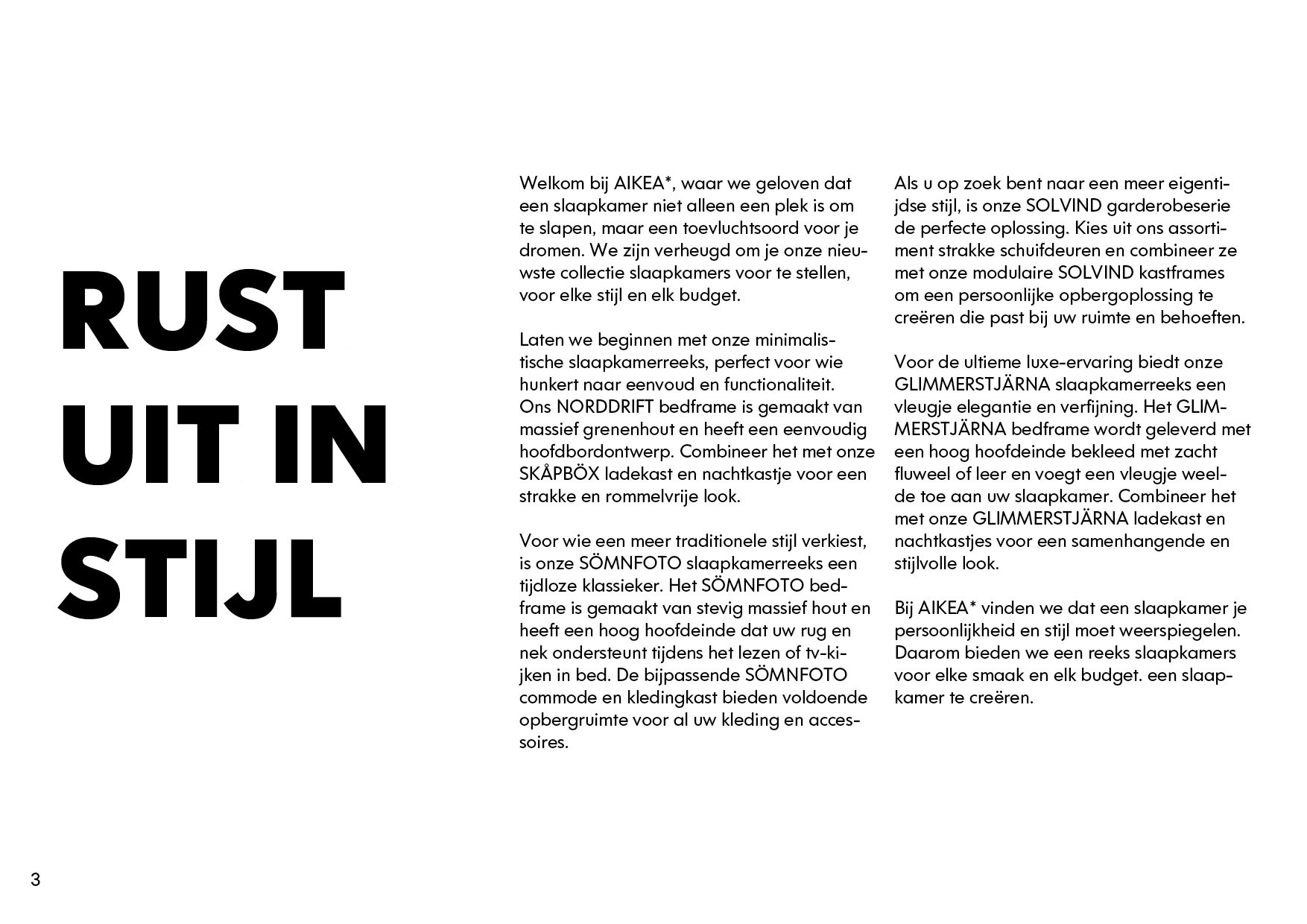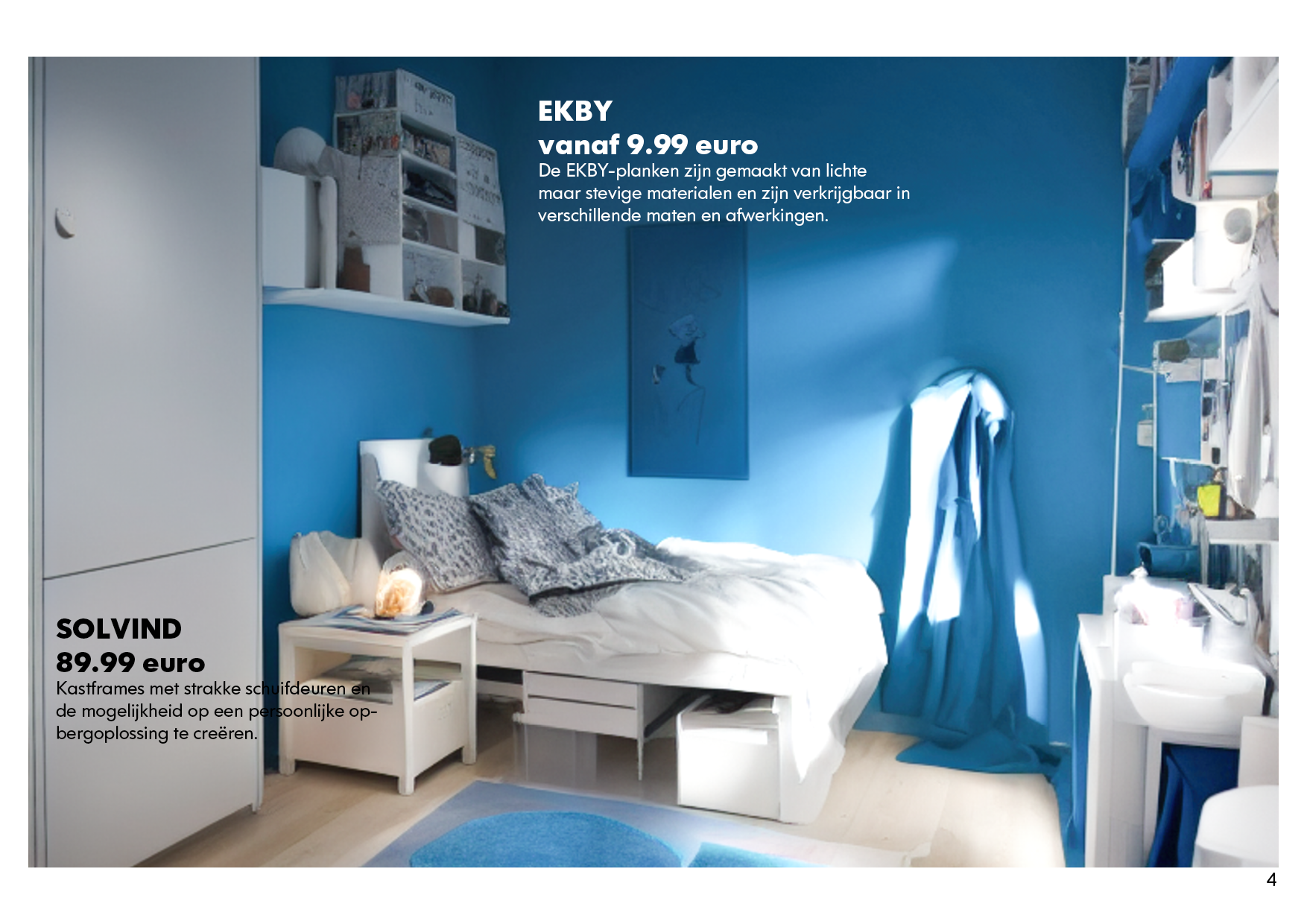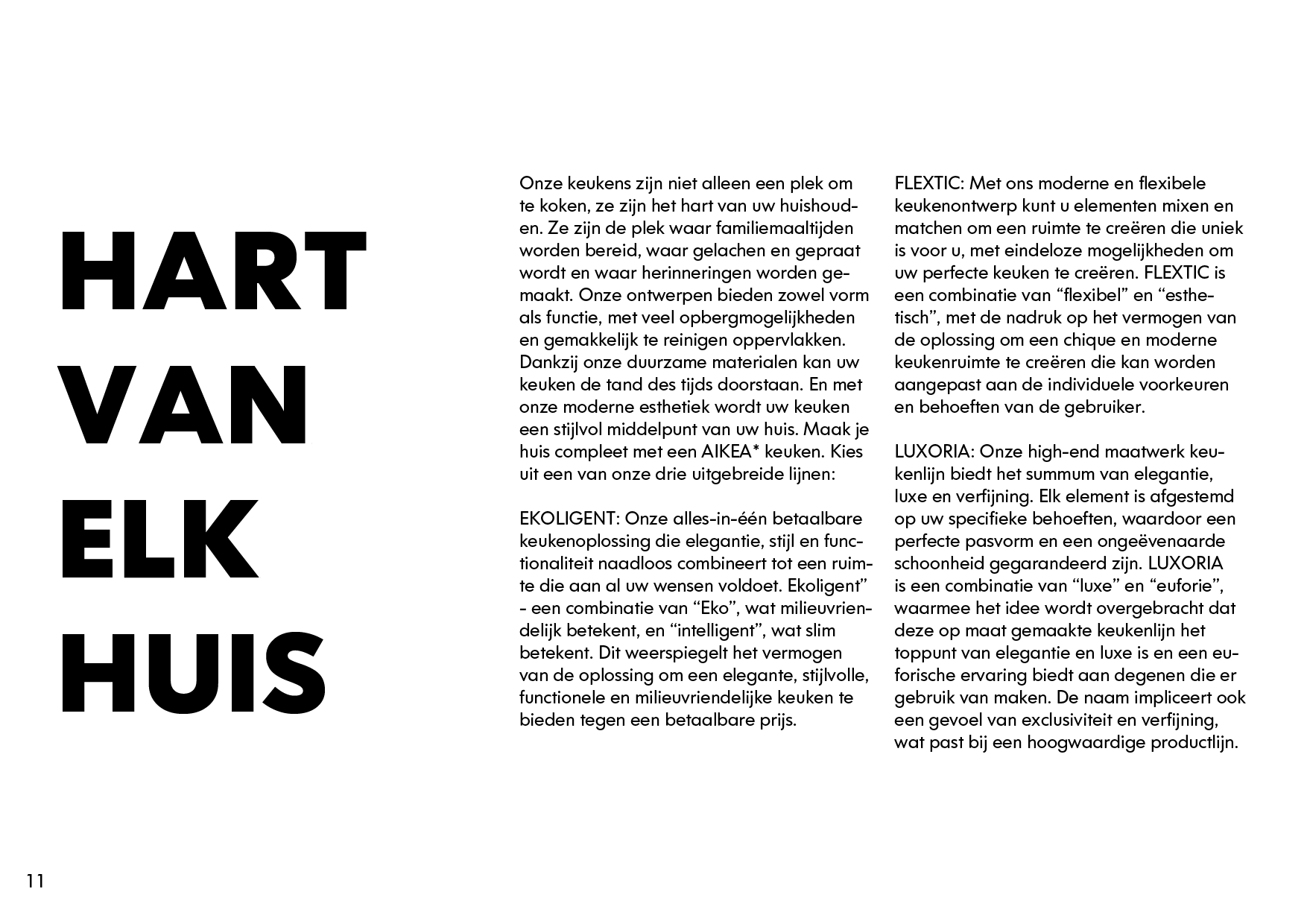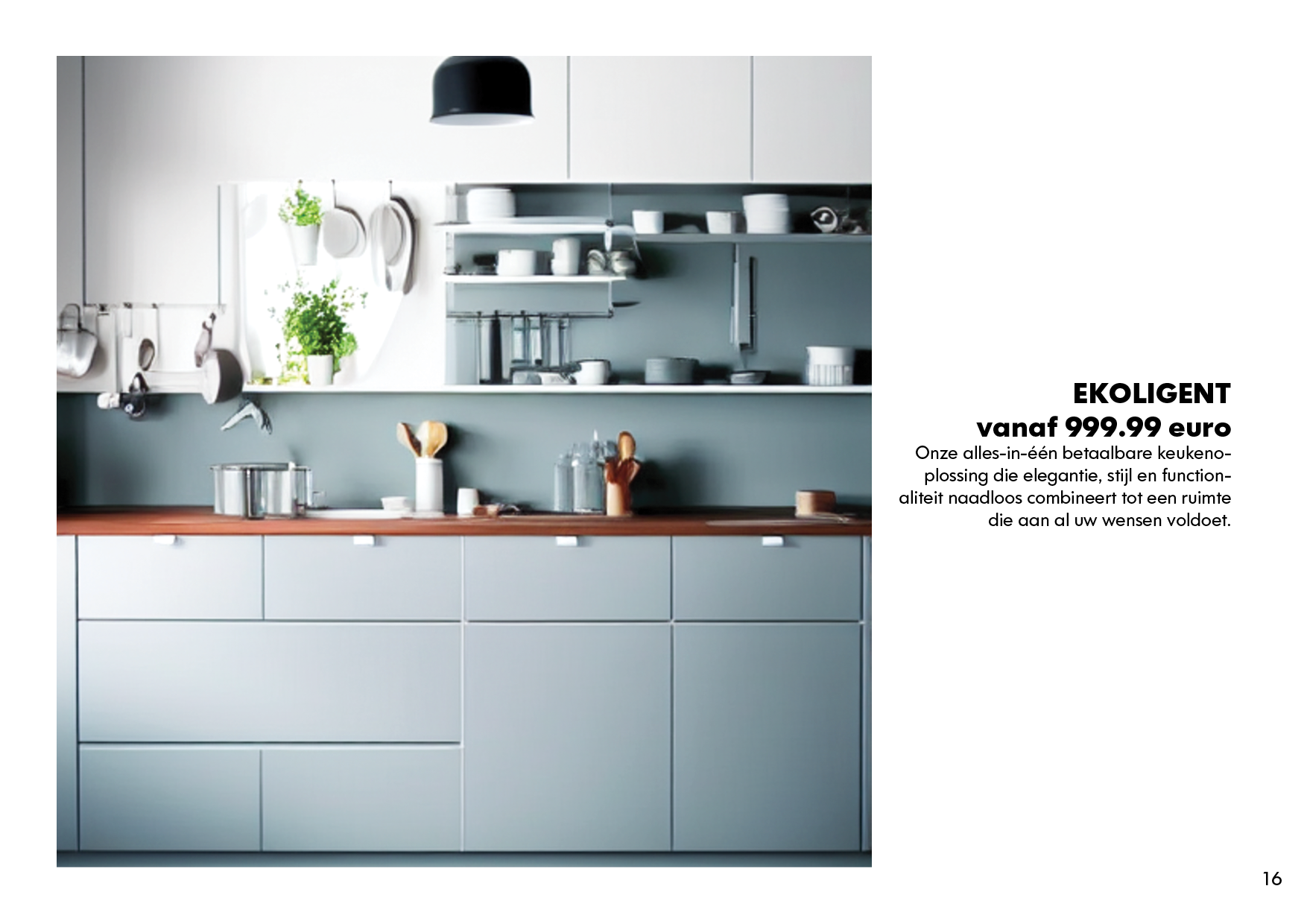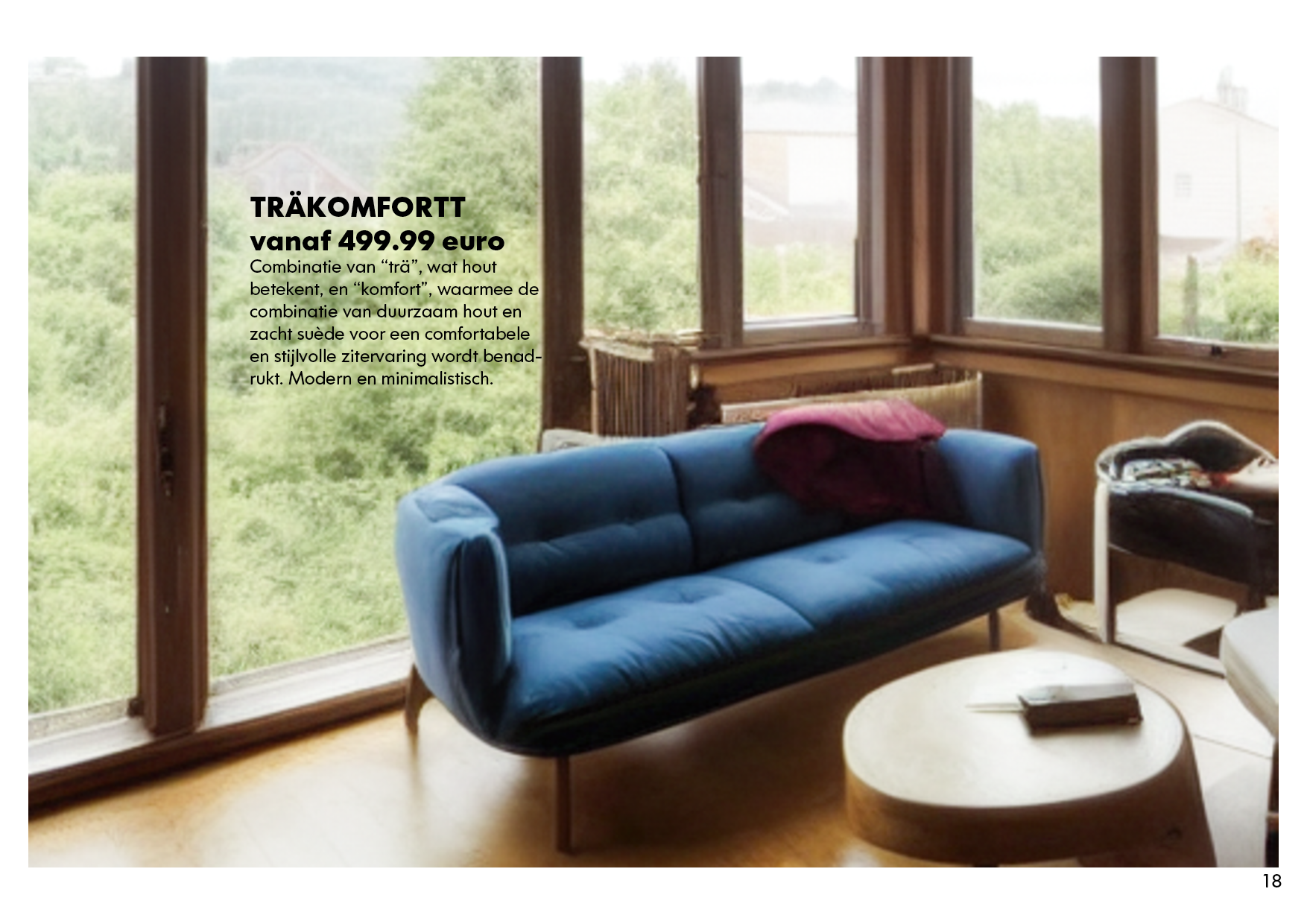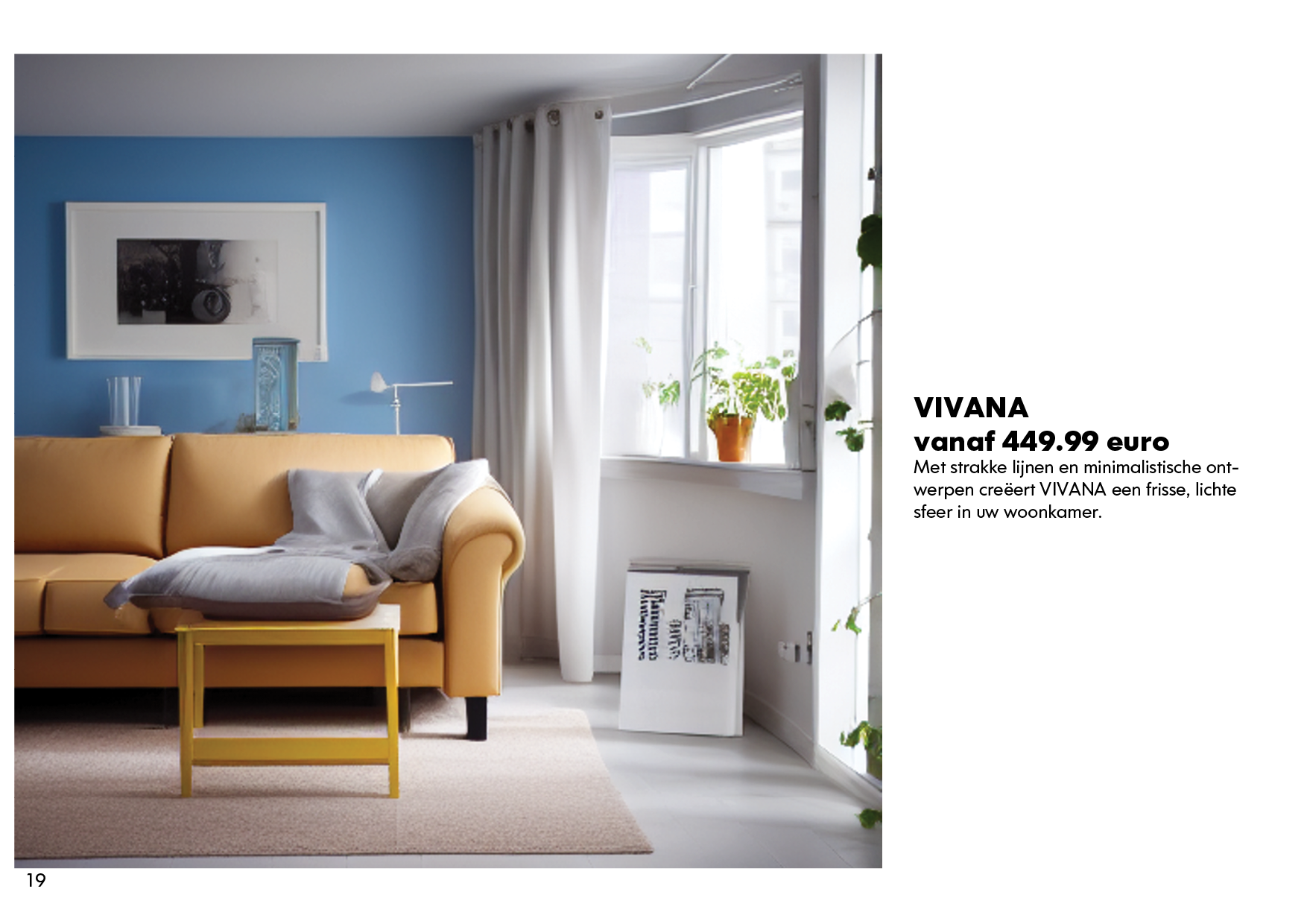AI & DESIGN -AIKEA*
Artificial intelligence already determines large parts of our lives. How we work, travel, create tasks for school ... Even when you take a simple photo with your modern smartphone, this reality is determined not only by glass lens elements, but also by algorithms and weights of AI models. Such AI systems can not only help us take our snapshots, but they can completely make them up! What if that made-up subject was our interiors? Beds, kitchens, desk tables ... The furniture that can define our identity and the rhythm of our lives. Our designs and our lives completely in the hands of algorithms like Stable Diffussion and ChatGPT!
That's the crazy idea of some students and their teacher at Sint-Lievens College in Ghent. During their third year, they receive subjects where computational thinking, programming and artificial intelligence are central. Not purely theoretical, but where these applications and the underlying systems are part of real cross-curricular projects. Where the we actively explore the possibilities and have an eye for the limitations of different forms of machine learning. For example, last school year we already worked on the creation of an AI art gallery, combined these types of applications with classical myths, and designed a construction for the Maker Faire Ghent in order to focus the discussion on the "value" of these AI results.
So, unfortunately, the interiors and furniture in this catalog are not for sale. Who would also earn that profit? The students, the teacher, the AI model, the real designers who formed the basis of the datasets used or the designers at the Swedish furniture company IKEA? An issue for another time. All items were created by based on the input of the students, though. Their instructions (=prompts) and their own personal living spaces (=initialization images) formed the basis of each design. Each design thus contains a highly personal test of a student. So a particle of personality in this increasingly digital, and AI-determined, world.
“Our” results
Our approach
Technical background
During this project, students were introduced to generative AI models such as Stable Diffusion. This type of model uses a Diffusion approach. This involves creating new images from noise. The AI models are basically large language models. They are, in a nutshell, similar to well-known tools such as ChatGPT. But the system is trained not only on text, but also on images. To achieve this, it made use of alt data. Text data that accompanies an image and is especially used for people with visual impairments. That description is then read aloud by the device. This approach enables the model to understand a written instruction and create new representations of it. In other words, it can draw on command! You can read more about exactly how a diffusion model works here.
Prompting!
Of course, that command has to be written down by the students! There is a whole science behind writing good instructions or prompts, and they can be quite different between AI models. For example, a good prompt for an art model does differ from one for ChatGPT, for example.
‘matte expressive for children of a boy emptying his pants pockets in a forest at sunrise, god rays piercing the canopy, by Robbe Wulgaert, 5K resolution’
Like you can notice, a prompt for an image model differs substantially from how one that you use for a GPT model.
Fist Help With Prompting!
Describe the desired photo by starting from the original photo. Then add new elements such as the desired style, look, missing elements ...
Let a GPT tool help you! Although they both have different ways of responding to instructions, a GPT model is capable of setting up a prompt for a CLIP language model.
Make use of a tool such as CLIP Interrogator. This one actually does the opposite of what we intend. Give it a picture and the tool will check what keywords the language model would place with the given picture.
Hoe een CLIP-model de “wereld ziet'“.
Use a starter image!
Students don't just provide an instruction for the AI model. They also provide a starting image. A picture of a room from a magazine, website, their own picture, via the webcam of their own device ... That picture, along with the prompt, is the starting point for the picture model. It will use the existing image as a guide to apply the instruction to it.
Requirements
This project is just one example of how to employ this type of generative AI technology in the prototyping phase of a task. The tool manages, in a short time, to generate multiple examples. You do notice some major errors or missing things here and there. For example, a sink in a kitchen will work best if you provide it with a faucet ...
These designs or methods of working are thus not a capstone, but a starting point for further steps, corrections, adjustments ... carried out by man. It makes it possible to generate a multitude of ideas and points of inspiration in a short period of time. Thus, none of the above designs could constitute a final piece of furniture.
To execute this yourself in class you will need the following items:
Some catalogs, magazines, examples ... to inspire students and discuss features in class:
A laptop with a webcam;
A still camera or smartphone with a functional camera;
A notebook with Python code to drive the AI model;
A stable internet connection.
I want this in my class! What should I do?
Want to work on this yourself in your classroom? Super! The future will be more and more digital. A future in which artificial intelligence will play a very important role, in many facets of our lives. That we need to prepare and motivate young people for this goes without saying. Should you still have some questions after reading the above article, I am happy to help you with that! Through the buttons below you can send me a message or get information about a refresher course or workshop. I usually reply within 48 hours!

